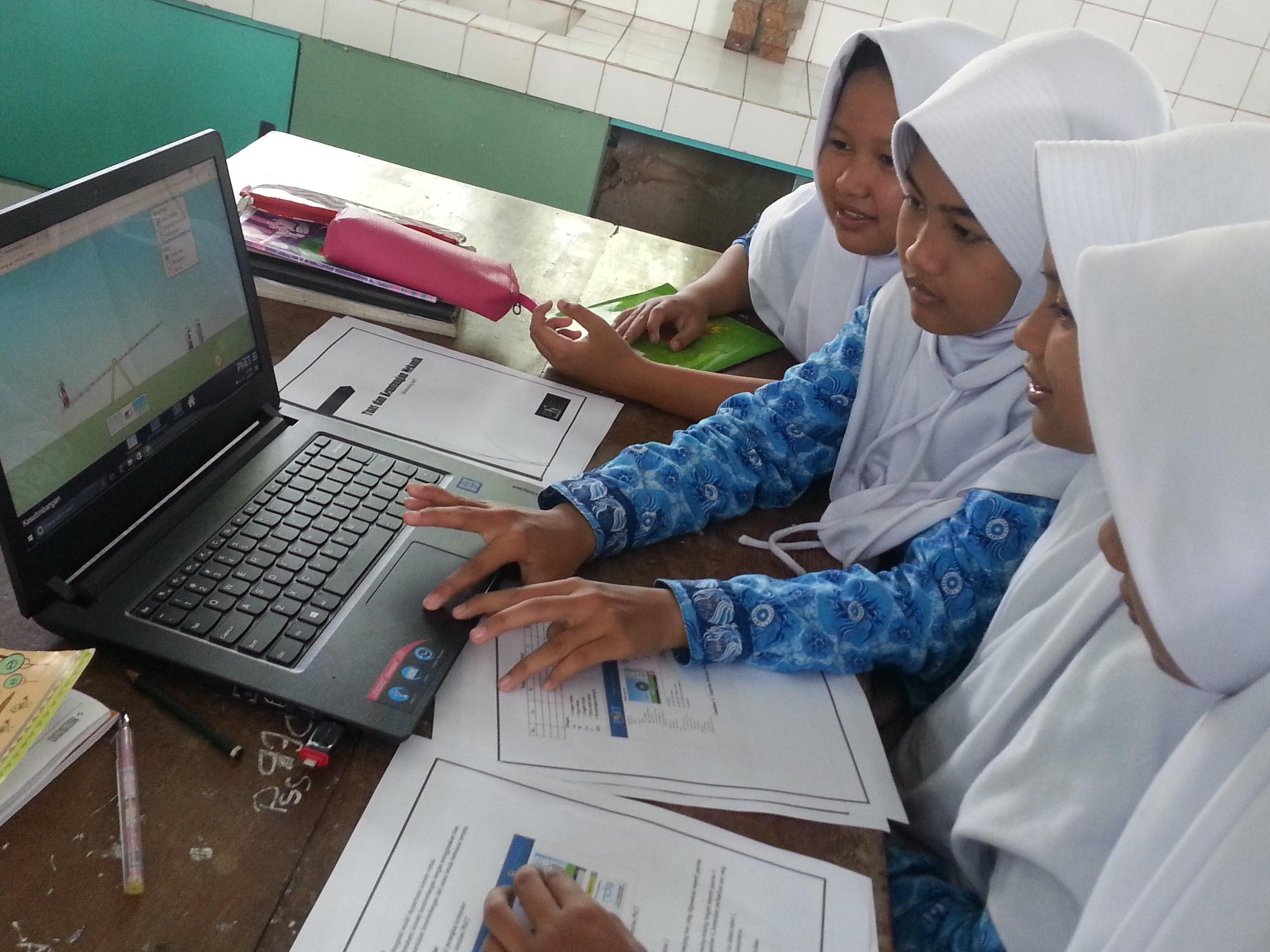
In Indonesia, students explore PhET’s Balancing Act simulation
It’s hard to find a physics or chemistry teacher that doesn’t use PhET Interactive Simulations, a free online science and math simulations platform founded at the University of Colorado Boulder in 2002 by Nobel Laureate Carl Wieman. These beautifully designed STEM explorations are loved by students and educators alike. The library of 160 simulations offers diverse possibilities: students can experiment with different states of matter by changing temperatures and pressures, design and test electric circuits, or explore how gravity affects planetary motion, to name a few. Translated into 106 languages, these simulations are now used 250 million times per year worldwide.
PhET simulations are helping children around the world to study under all sorts of challenging conditions, including COVID restrictions and military conflicts. Ukrainian children have been using PhET simulations to stay engaged in learning even while hiding in bomb shelters or adapting to life as refugees. Between April and June, PhET counted nearly 200,000 uses of Ukrainian-language simulations as students worked to finish their school year – a 37% increase over the prior year.
This year, PhET celebrates its 20th anniversary. I met with Kathy Perkins, who has been the Director of PhET since 2008 and originally joined PhET as a postdoctoral associate with Carl Wieman in 2003.
Julia Brodsky: These days, everyone understands why we need online education. But PhET started relatively early, in 2002. What was the initial motivation and vision?
Kathy Perkins: When Carl Weiman won the Nobel Prize, he found himself presenting his research to very diverse audiences. He tried using interactive visualizations to bring his complex physics ideas to life, and saw both increased engagement and deeper understanding in his audience. This experience seeded the idea of transforming learning with interactive educational simulations where students can openly explore physical phenomena, directly manipulating the controls, choosing from multiple representations, and trying different set-ups. The core design principle is interaction with immediate and dynamic feedback.
JB: PhET is such an intuitive and playful environment. What guides its design?
KP: We focus on creating opportunities for student agency, driven by curiosity and challenge. There is no set path through a PhET simulation, rather it is an inviting and open space. We are also strongly guided by education research, creating designs to address known student difficulties. The result is a highly flexible and fun learning tool.
MORE FOR YOU
JB: How do you see the future of traditional and online science labs?
KP: I see online labs and hands-on labs as great in combination, but for both, we need to push beyond “tradition.” Recent research by Carl Wieman and Natasha Holmes (Introductory Physics Labs: We can do better) shows us that to develop the scientific problem solving skills we strive for as educators, students need to be put in the driver’s seat. Students need to be making the important decisions about the experiment and justifying those decisions. Structured or “traditional” labs have shown little to no effect in developing students’ scientific problem solving.
Simulations can be effective and efficient in helping students discover important concepts and rapidly experiment and test their ideas. Hands-on labs are great for building skills with physical equipment, debugging problems, and confronting real-world challenges such as error and uncertainty. However, not all students have access to physical equipment. With funding from the Moore Foundation, we will be adding sources of uncertainty to some PhET simulations to deepen data fluency access and understanding.
JB: How does PhET increase educational opportunities for communities with limited resources?
KP: Our mission is to increase science and math literacy worldwide by expanding the access to and impact of PhET simulations. Our simulations can be accessed for free from our website, and can be downloaded for offline use by communities without reliable internet. With support from the Yidan Prize Foundation and Mastercard Foundation, we recently launched a new PhET Global initiative, allowing us to deepen our international work. We currently focus on Latin America and Africa, expanding translations, supporting communities of teachers and education researchers, and establishing cohorts of PhET Fellows who serve as PhET experts and support teacher professional development locally.
JB: PhET is 20 years old this year. I am curious, what has changed for the platform over the years?
KP: We started in college-level physics classes. Over the years, we expanded to chemistry, then to middle school math and science, and now to early math. Working with middle school students catalyzed significant evolution. Our team of educators, researchers, and software developers had to advance our design approaches, using implicit scaffolding to support productive exploration while keeping the simulations open, exploratory, and fun.
We have also expanded how PhET simulations can support the entire education community, including researchers and education companies. We’ve built a partnership program and are advancing a new line of PhET simulations that are customizable and have back-end data to enable research on learning, personalized feedback, and more authentic assessment.
Finally, we delved deep into Inclusive Design work, which integrates accessibility features. And we launched a Diversity, Equity, Inclusion, and Belonging (DEIB) in STEM Education initiative, working with teachers and students to create a comprehensive strategy for how PhET can support equitable STEM learning experiences for all.
JB: Building on the impact PhET has already had, what’s next?
KP: Even with over 100 simulations, we have more math and science concepts that need to be covered. It takes significant time, expertise, and money to build high-quality resources, but the investment really pays off when you see one simulation used millions of times. There’s a lot to do to improve global STEM education. We know that we are making an impact. Still, there are a lot of teachers and students we haven’t yet reached. Our goal moving forward is to make sure that every student gets the opportunity to fall in love with math and science.
Put on your student hat and give PhET simulations a try – your scientific curiosities could always use a wake-up!







